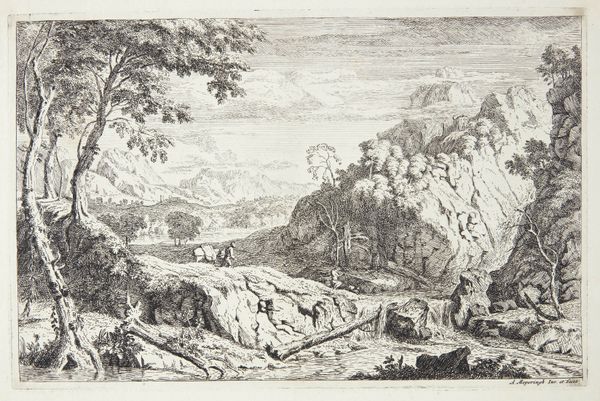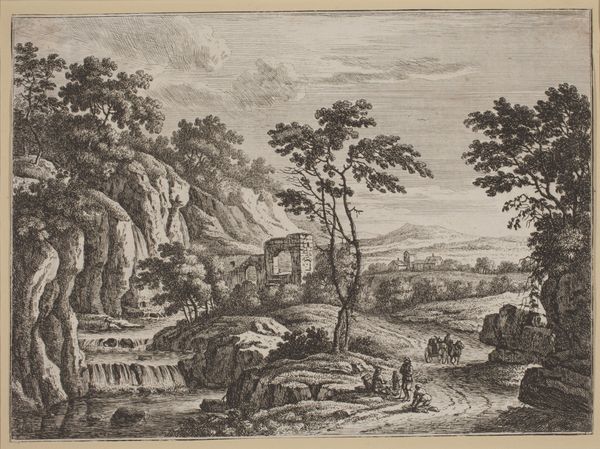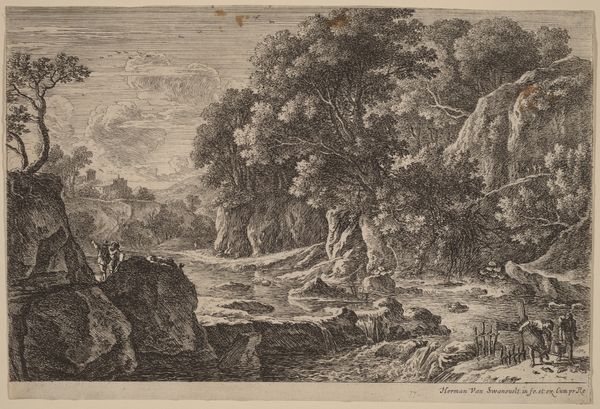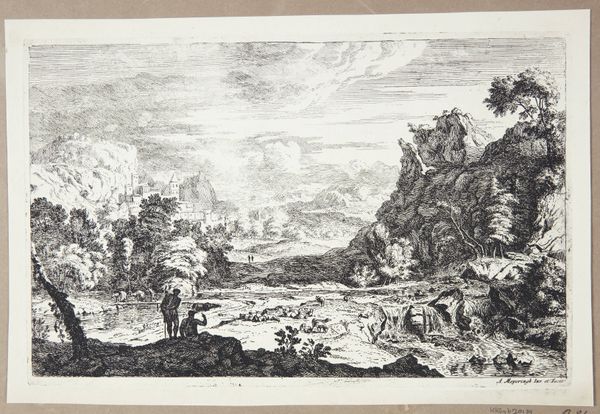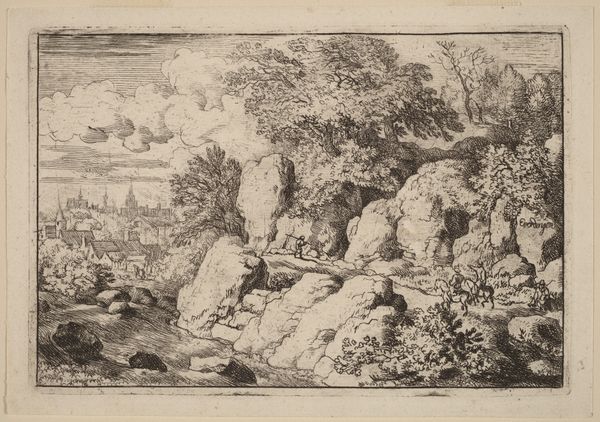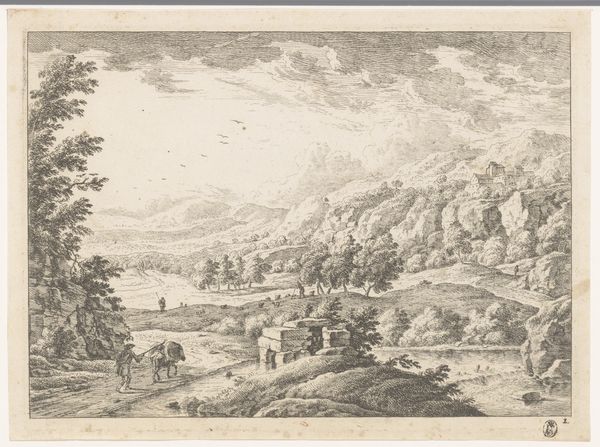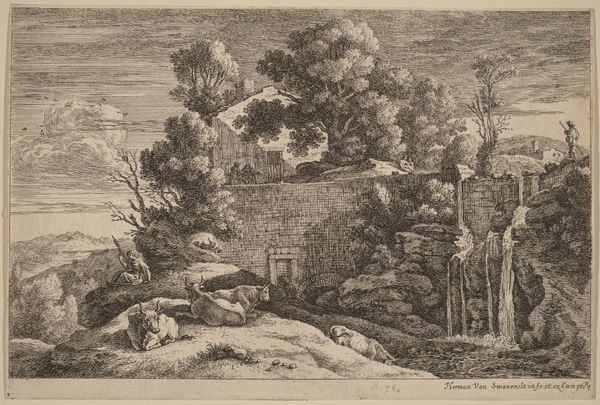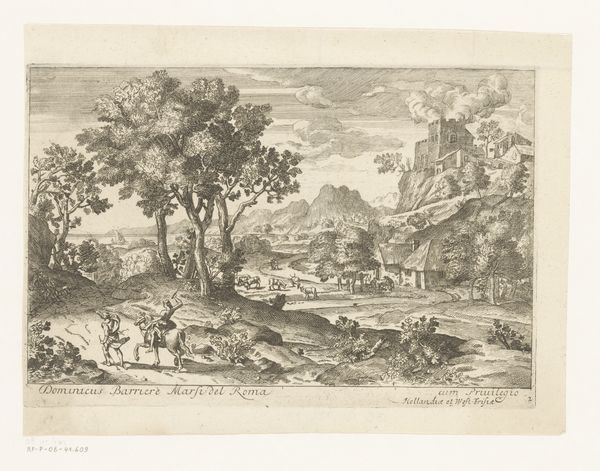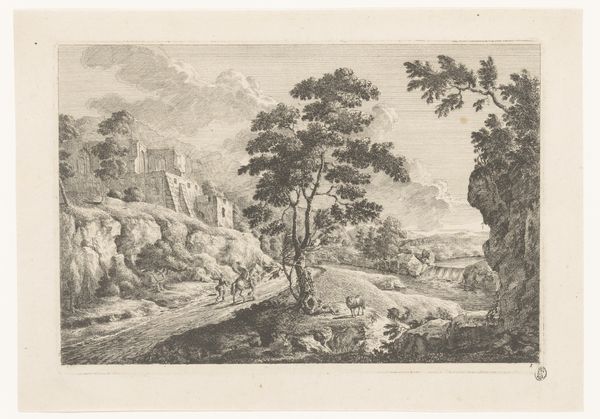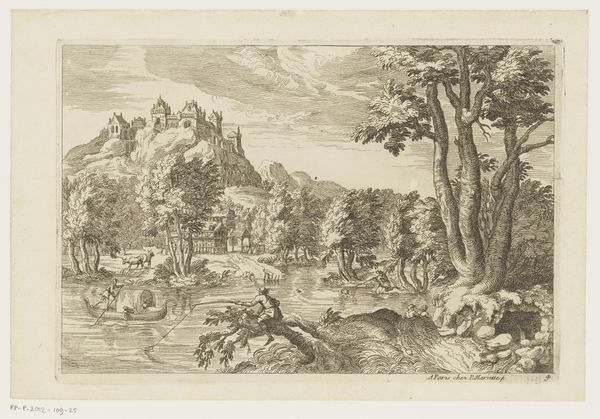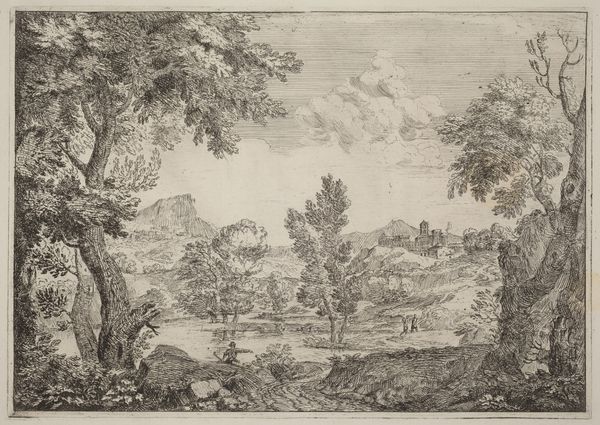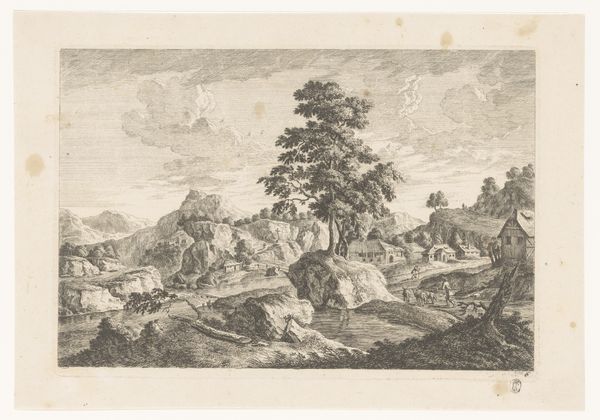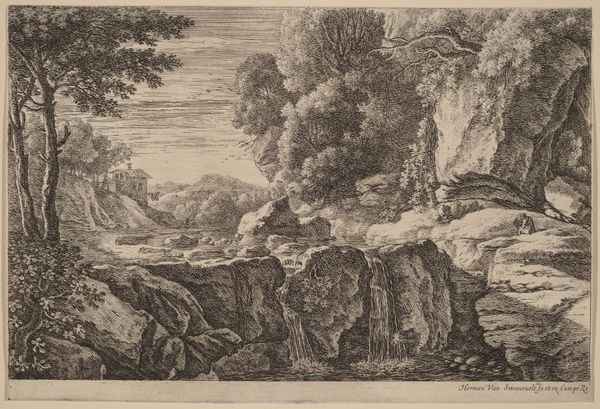
drawing, print, engraving
#
drawing
#
medieval
# print
#
landscape
#
11_renaissance
#
pencil drawing
#
line
#
cityscape
#
engraving
Dimensions: sheet: 21.3 x 28.2 cm (8 3/8 x 11 1/8 in.)
Copyright: National Gallery of Art: CC0 1.0
Curator: There's a sort of hushed melancholy hanging over this engraving, wouldn’t you agree? The way the light barely touches the ruins... it’s all quite pensive, really. Editor: Indeed. This is "Landscape with Two Ruined Towers" by Johann Christoph Dietzsch. It’s difficult to date precisely, but it situates itself aesthetically within the Romantic-era fascination with ruins, memory, and the passage of time. Curator: Ruins. Yes, ghosts of grand ideas gone to seed, almost like watching ambition slowly crumble. Though there’s also something quite beautiful in decay, a sense of… potential? Editor: I think that potential is key. Ruins are never neutral. Their representation became potent in the late 18th century, offering commentary on power, empire, and societal transformations, particularly when we examine the politics of picturesque aesthetics and colonial gaze. Curator: So, more than just pretty pictures? Tell me more. Because to my eye, there’s a very clear line between this engraving’s formal style and what feels like something profound, perhaps unsayable? Like the ruins themselves, emotion teeters between there and not-there. Editor: Precisely. Artists frequently deployed images of ruined castles and abbeys, signaling reflections on feudalism, religious authority, and class structures, aligning with evolving societal and philosophical debates related to democracy, liberty, and burgeoning nationalisms. Curator: Right! These weren't simple postcard souvenirs for the elite! There’s a sense of drama that also grabs my attention, like that tiny little dog running off into what’s left of someone's castle… perhaps this humble image critiques privilege by juxtaposing it with something smaller, and wilder! Editor: Absolutely, art from this period invites discussions regarding nostalgia, political critique, and even serves as early environmental commentary by highlighting nature's reclamation of human constructs. Curator: Well, whether Dietzsch intended a pointed critique or not, this “Landscape with Two Ruined Towers” leaves us grappling with how we want to move through this big, beautiful, broken world. Editor: It encourages contemplation on themes of cyclical history and impermanence, prompting reflections on contemporary socioeconomic systems and ecological issues.
Comments
No comments
Be the first to comment and join the conversation on the ultimate creative platform.
